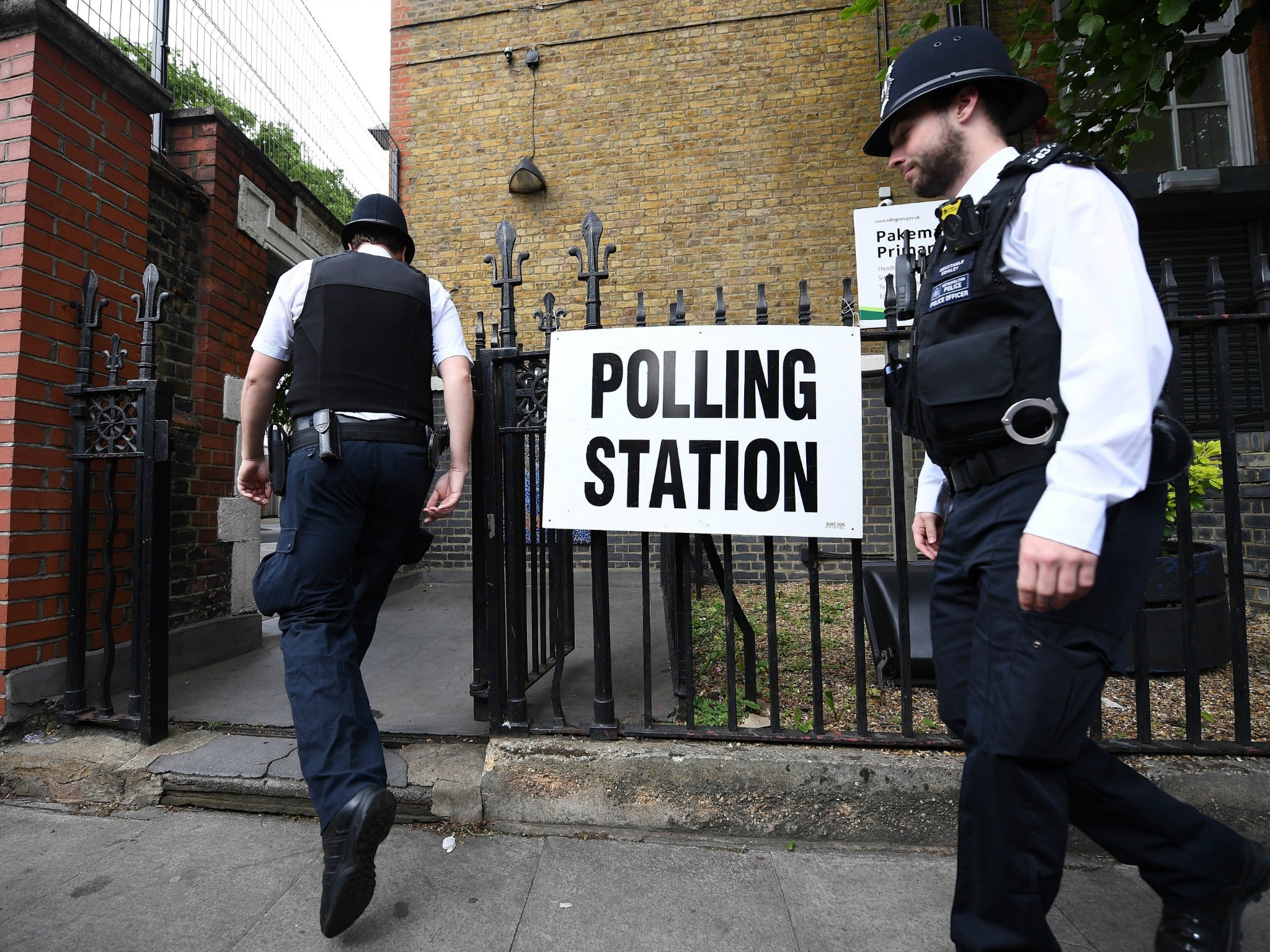Government to trial photo ID at polling stations to combat voter fraud
Critics of the plan say it solves a ‘non-existent problem’ and will disenfranchise poorer voters

The use of photo identification at polling stations is to be trialled in a series of forthcoming council elections, as the Government considers making it a legal requirement in the fight against voter fraud.
The Electoral Commission watchdog recommended in 2014 that voters should be required to prove their identities before casting a ballot, in response to a review into electoral fraud by Sir Eric Pickles that came in the wake of widespread voter fraud in Tower Hamlets.
Critics of the plan say it solves an “almost non-existent” problem while potentially disenfranchising large numbers of people on low incomes who do not have photo ID.
There were 44 cases in 2016 elections of people trying to use another individual’s vote – known as “personation” – up from 21 in 2014.
Pilots will be held in local elections in Woking, Gosport, Bromley, Watford and Slough in May 2018, with photo and non-photo forms of identification being trialled in different areas to see which is most effective and efficient. The East London borough of Tower Hamlets will also run a separate pilot examining the security of postal votes.
Voters in Northern Ireland have had to prove their identity at polling stations since 1985, with photo ID required since 2003. There have been no cases of personation in the province since 2003.
Announcing the trials, constitution minister Chris Skidmore said: “For people to have confidence in our democratic processes we need to ensure that our elections are safeguarded against any threat or perception of electoral fraud.
“The current situation of people simply pointing out their name without having to prove who they are feels out of date when considering other safeguards to protect people’s identity. It is harder to take out a library book or collect a parcel at a post office than it is to vote in someone’s name.
“I am very hopeful that by taking a careful, evidence-based approach in these pilots we will be able to roll out ID in polling stations at future elections.”
Liberal Democrat MP Tom Brake commented: “Introducing voter ID at polling booths is a solution to a problem that is almost non-existent in the UK.
“This is a completely unnecessary move that risks undermining our democracy by preventing millions of people from voting.
“Evidence from around the world tells us forcing voters to bring ID won’t stop determined fraudsters, but is likely to lead to even lower turnouts amongst young people and minority groups.
“We should be encouraging people to vote, not excluding them.”
Sir Eric’s report on electoral fraud last year said the current system was “unsatisfactory” and recommended that the Government should consider options such as requiring voters to show their driving licence, passport or utility bills.
Electoral Commission chief executive Claire Bassett said: “We welcome the minister’s announcement today as a positive first step towards implementing our 2014 recommendation that an accessible, proportionate voter identification scheme should be introduced in Great Britain.
“Voters in Northern Ireland have been required to show photographic proof of identity since 2003, and we have the opportunity to learn from that experience. The Electoral Commission is responsible for carrying out an independent, statutory evaluation of the pilot schemes and we will publish our findings following the May elections, in the summer of 2018.”
Subscribe to Independent Premium to bookmark this article
Want to bookmark your favourite articles and stories to read or reference later? Start your Independent Premium subscription today.

Join our commenting forum
Join thought-provoking conversations, follow other Independent readers and see their replies